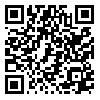Volume 4, Issue 7 (8-2014)
JRSM 2014, 4(7): 117-129 |
Back to browse issues page
Download citation:
BibTeX | RIS | EndNote | Medlars | ProCite | Reference Manager | RefWorks
Send citation to:



BibTeX | RIS | EndNote | Medlars | ProCite | Reference Manager | RefWorks
Send citation to:
Communicational Model of Organizational Learning Capabilities and Organizational Performance of Sport and Youth Offices of Iran's Northern Provinces. JRSM 2014; 4 (7) :117-129
URL: http://jrsm.khu.ac.ir/article-1-2207-en.html
URL: http://jrsm.khu.ac.ir/article-1-2207-en.html
Abstract: (8309 Views)
The purpose of this study was to determine the relationship between organizational learning capability and organizational performance in sport and youth offices of Iran's Northern provinces. Statistical population included of all managers, deputies and experts of the sport and youth offices in Iran's Northern provinces (Guilan, Mazandaran and Golestan) and managers and deputies from five selected cities in the year 1391 (N=108). Due to the limited population, the statistical sample was considered as a whole (n=108). For this purpose, organizational learning capability (Gomez, 2005) and organizational performance (Brown, 2001) questionnaires were used. Data analysis was performed at a significant level (p&le0.05) using descriptive statistics (mean and standard deviation, frequency distribution tables) and inferential statistics (Kolmogorov-Smirnov, Pearson correlation coefficient, multiple regression, and conformity factor analysis). Research results indicated that the systematic perspective subscale acquired the highest average in comparison with other organizational learning capabilities (&mu=3.35). Also, there was a significant correlation between organizational learning and organizational performance (p&le0.05, r=0.621). With regard to the linear relationship among variables and the assumption of errors independence from each other, predictor variables (organizational learning capabilities) revealed 37% changes in the rate of organizational performance. Also, while confirming the model parameters, it can be said that the presented model is appropriate and experimental data are coincided enough well with this model. Totally, according to the findings of this research, it is recommended that the different levels of managers make enough efforts to perceive the importance of organizational learning and how to establish these capabilities among the staff.
Type of Study: Research |
Published: 2014/08/15
Published: 2014/08/15
| Rights and permissions | |
 | This work is licensed under a Creative Commons Attribution-NonCommercial 4.0 International License. |



